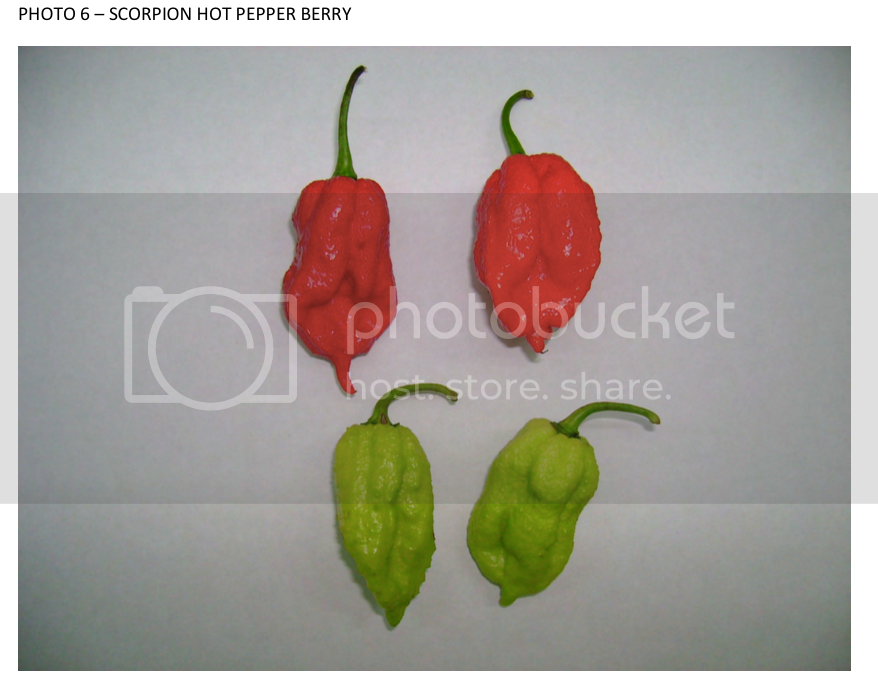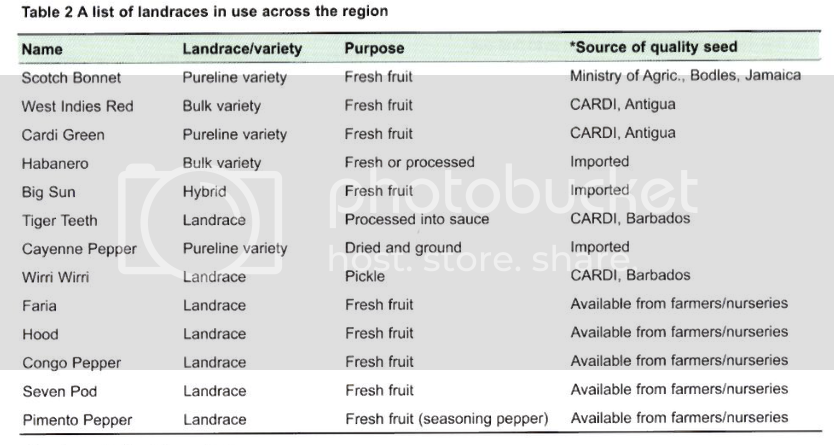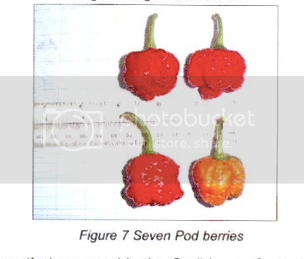Some interesting tidbits from CARDI material*:
"Meanwhile in Trinidad and Tobago, the authorities are actively pursuing an intellectual property claim on the Scorpion variety."
Here's what that looks like:
Now, as for the Seven Pod, this apparently is a landrace variety:
Here's what these look like:
For those of you who don't know what is meant by landrace and so on:
Again, the Brainstrain and the Morouga we're talking about here are practically identical to the Seven Pod landrace. There ought to be enough variation in landraces to account for the variation we've been seeing. It seems then that the Scorpion was a selected Seven Pod, perhaps also the Bhut Jolokia is a selected Scorpion or Seven Pod? Over 37% of the population of Trinidad and Tobago are of Indian descent and most sailed from Calcutta, very near Assam.
Here is some detail from a British indenture agreement from 1912, basically after five years of selling yourself into service in a colony such as Trinidad and Tobago, you could return home to India: "Conditions as to return passage-Emigrants may return to India at their own expense after completing five years’ industrial residence in the Colony."
IMHO, none of the "world's hottest" since the Bhut Jolokia (i.e. Trinidad Scorpion Butch T, "Trinidad Scorpion Moruga," and the Carolina Reaper) are significantly outside the normal variation you'd expect to find in a landrace pepper to warrant being recognized as something new. Guinness World Records should recognize this and stop being duped by the latest greedy person seeking to receive the title of "world's hottest."
All the "world's hottest" titles since the Bhut Jolokia should be rescinded. The "world's hottest" is the landrace Seven Pod from Trinidad and Tobago and we have many generations of Amerindians to thank for this, they should get the credit if anyone should.
*This is where the CARDI material was found:
http://www.cardi.org/cardi-publications/technical-publications/crops/
Adams H, Umaharan P, Brathwaite R and Mohammed K. 2007, Reprinted 2011. Hot pepper production manual for Trinidad and Tobago: an output of the CARDI project “Improving the hot pepper industry of Trinidad and Tobago. St. Augustine, Trinidad and Tobago: Caribbean Agricultural Research and Development Institute. PSC #: TT/001/06. Hot Pepper Production Manual for Trinidad and Tobago 2011 reprint




